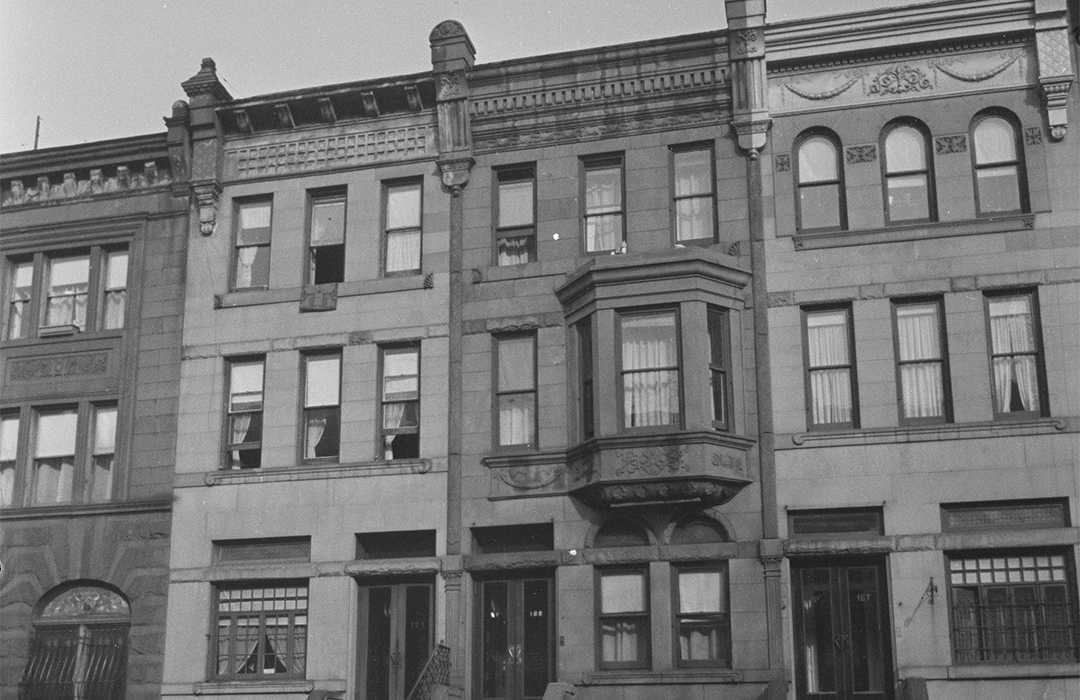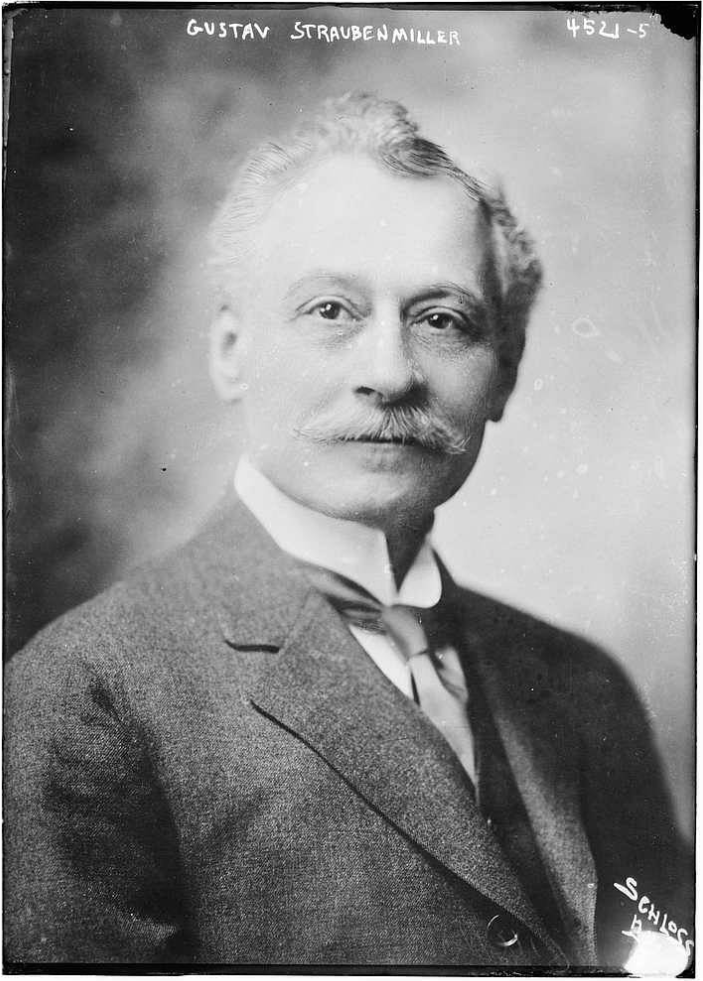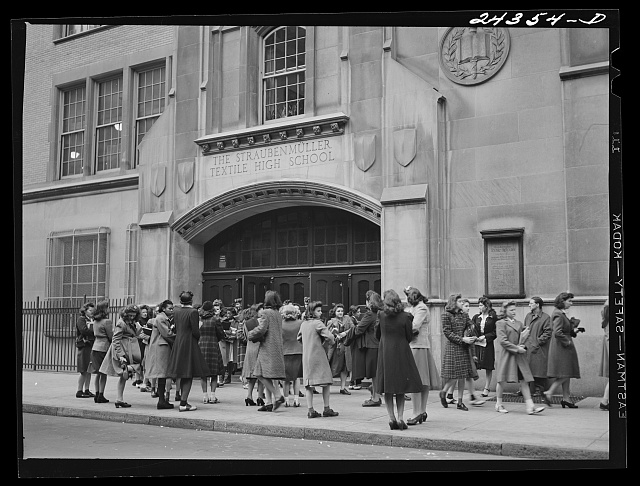
169 West 88th Street
by Tom Miller
In 1891, real estate developer Samuel R. Donnellon completed the construction of a trio of brownstone-faced houses designed by architect George H. Anderson at 167 through 171 West 88th Street. Three stories tall above high English basements, Anderson designed them in a happy marriage of Renaissance and Romanesque Revival styles. At 169 West 88th Street, Renaissance Revival appeared in the charming pressed-metal oriel at the second floor and the unique and elaborate cornice. Anderson introduced Romanesque in the chunky, undressed stonework and newel of the dog-legged stoop and the rough-cut band courses at the parlor and second floors.
Donnellon sold 169 West 88th Street to Josephine Beck in March 1892. Although the selling price was kept private, her mortgage of $14,500 (equal to half a million in 2024 dollars) provides a hint. It does not appear that Josephine ever lived in the house, instead renting it. An advertisement in 1869 offered the “three-story modern house, well furnished,” for $125 a month, more than $4,600 by today’s conversion.
Josephine Beck sold 169 West 88th Street to a tenant, Magdalene Walton, in September 1900. It triggered a game of real estate hot potato. The house was resold in 1907 and again in 1908. Then, by the end of World War I, it was home to Gustav Staubenmuller.
It triggered a game of real estate hot potato.
Dr. Staubenmuller had been an educator for decades. The Brooklyn Standard Union recalled, “His education was received in the public school of the city and in the City College. He began to teach immediately upon leaving college, and in a few years was made assistant principal.” On December 27, 1894 (when this house was still new), the weekly journal School reported, “The Committee on Teachers are reported to have agreed on the name of Gustav Staubenmuller, whom they will present for the appointment of assistant superintendent at to-day’s Board meeting.” On April 11, 1906, he was appointed Associate Superintendent of New York City Schools (it was essentially the same position he had held for more than a decade).
On November 27, 1921, The Brooklyn Standard Union reported on possible changes within the Board of Education. The superintendent of schools was retiring on February 1, 1922, and Staubenmuller was one of the three candidates being considered to replace him. The article noted his long service:
The selection of textbooks and the preparation of courses of study long received his special attention and when the agitation began for classes for children handicapped by physical defects, he promptly identified himself with it and took a large part in organizing the school for the deaf, classes for the blind, for the crippled, and for the anemic. Tactful and popular, he is one of the hardest workers in the system, and at the same time never seems hurried.
The article noted, “He resides at 169 West Eighty-eighth street, Manhattan.”
Outside of his academic life, Staubenmuller was a horticulturist and member of the National Plant, Flower, and Fruit Guild. At its annual meeting in the American Museum of Natural History on May 28, 1924, a new board of officers was elected. Many of the names came from the top echelon of society—Mrs. James Roosevelt, Mrs. Frank N. Doubleday, Mrs. William Sloane, and Mrs. Alexander Van Rensselaer, for example. Among the seven honorary vice presidents was Dr. Gustav Staubenmuller, whose name appeared just under that of Frederick Law Olmsted.
No. 169 West 88th Street may have been operated as a respectable rooming house during the Depression years. Living here in 1935 was 31-year-old Benjamin Dorfman. On October 17, The Times Record of Troy, New York, reported that he and Grace Hughes, “a native of Corinth, N. Y.,” had obtained a marriage license there. Residents of Corinth may have raised an eyebrow when they read that Grace, “also gave the New York address as her present residence.”
By 1952, the house was once again an upscale private home. On May 30 that year, the Long Island News reported that John G. Gunning and his wife had announced the engagement of their daughter, Ann Catherine, to Richard Joseph Magee. Ann Catherine had graduated from Barnard College, was teaching at the exclusive Brearley School for Girls, and working on her master’s degree in political science at Columbia. Her future husband was an instructor in chemistry at St. John’s University and was studying for his doctorate at Columbia.
No. 169 West 88th Street may have been operated as a respectable rooming house during the Depression years.
That same year, Warren Davis Ayres, Jr., “Slew” married Patricia Susan Miller. By the time they purchased 169 West 88th Street, they had a young daughter, Page. In 1972, Warren and Patricia converted the house into two duplex apartments, taking the lower half for themselves. Page Ayres embarked on an architectural career, graduating from New York University and then achieving a degree in Urban Design from Oxford Brookes University in England and a master’s in architecture from Columbia University.
With a focus on historic preservation, Page was Associate and Director of Preservation at Beyer Blinder Belle, before opening her own office in 1992. Her contribution to historic architectural preservation includes seats on numerous boards and work with government agencies and other groups.
Warren Ayres died in 1984, and Patricia died the following year. Page Ayres Cowley still owns 169 West 88th Street and she and her husband Nick Cowley continue to occupy the family’s duplex apartment.
Tom Miller is a social historian and blogger at daytoninmanhattan.blogspot.com




